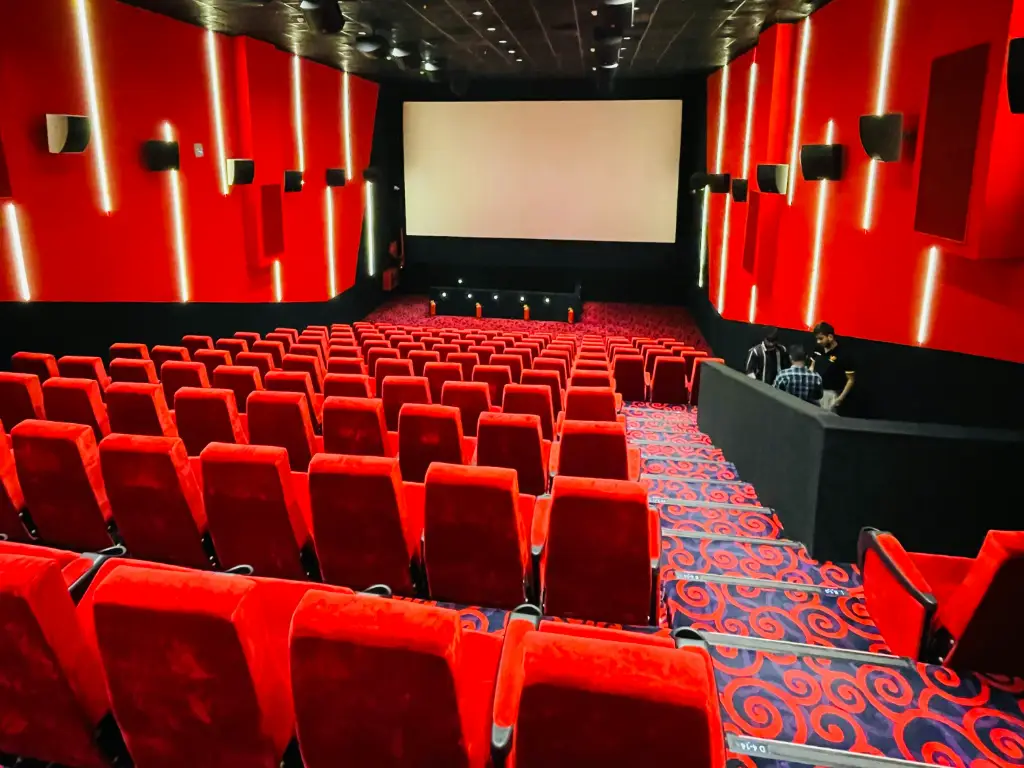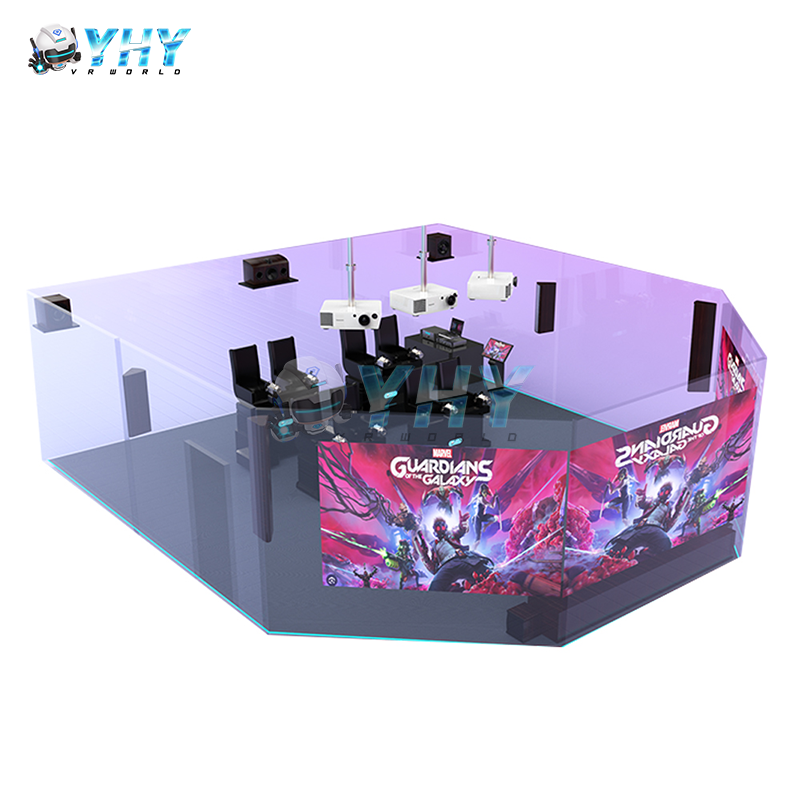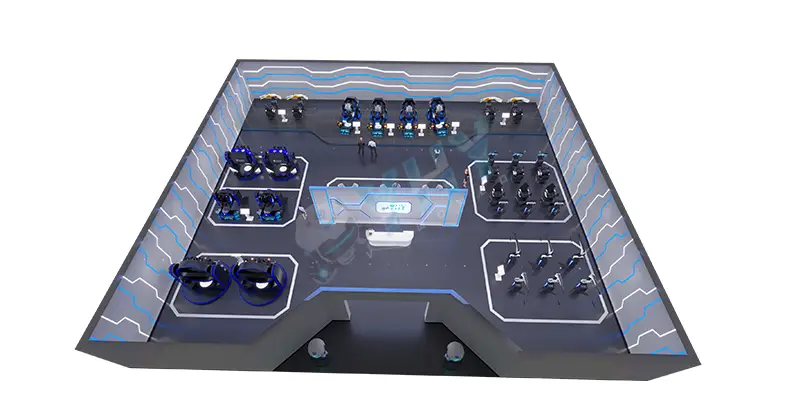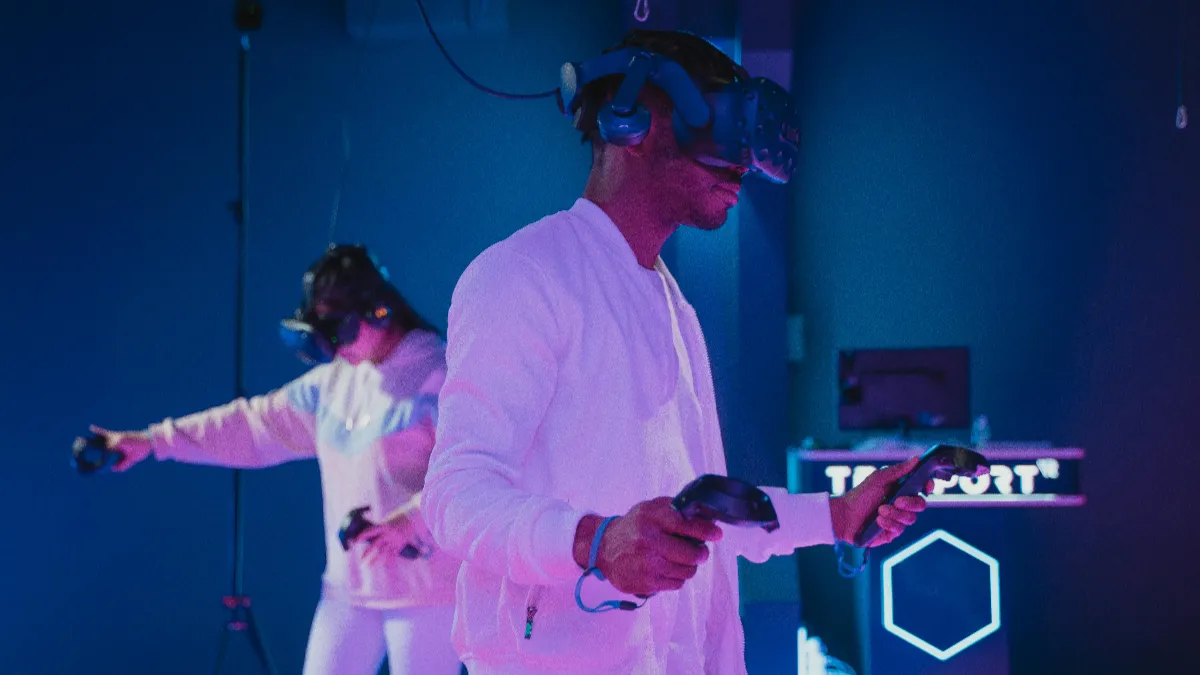सिनेमा की दुनिया लगातार विकसित हो रही है, हमने जो एक बार संभव सोचा था, उसकी सीमाओं को धक्का देना. 3 डी से 4 डी और अब तक, 7D फिल्मों की रोमांचक दुनिया, प्रौद्योगिकी फिल्म-गोइंग अनुभव को बदलती रहती है. यदि आप इस नवीनतम प्रवृत्ति के बारे में उत्सुक हैं, आप अकेले नहीं हैं! इसलिए, आइए 7 डी सिनेमा की दुनिया में गहराई से गोता लगाएँ और इस बारे में जानने की जरूरत है कि इस तकनीक को इतना खास क्या बनाता है.
7 डी क्या है?

7D शब्द एक बहु-संवेदी सिनेमा अनुभव को संदर्भित करता है जो उन्नत दृश्य को एकीकृत करता है, श्रवण, और एक सिंक्रनाइज़ सिस्टम में भौतिक प्रभाव, एक गहरी immersive दृश्य -श्रव्य वातावरण देने का लक्ष्य. जब पूछते हैं कि 7D फिल्म क्या है, यह समझना आवश्यक है कि "7 डी" में "डी" शाब्दिक स्थानिक आयामों के अनुरूप नहीं है, लेकिन इसके बजाय पारंपरिक 3 डी सिनेमाई अनुभव में जोड़े गए संवेदी इनपुट की परतों का प्रतिनिधित्व करता है.
एक विशिष्ट 7 डी वातावरण में, 3 डी विज़ुअल्स देखते हुए दर्शकों को मोशन प्लेटफॉर्म सीट पर बैठाया जाता है. अनुभव को कंपन जैसे भौतिक प्रभावों के साथ संवर्धित किया जाता है, हवा, पानी स्प्रे, सुगंधों, कोहरा, बबल, और यहां तक कि स्पर्श प्रतिक्रिया भी. इन प्रभावों को स्क्रीन पर सामने आने वाली घटनाओं के साथ ठीक से समन्वित किया जाता है, संवेदी यथार्थवाद और सगाई में वृद्धि.
7D की अवधारणा को विभिन्न उद्योगों में लागू किया जा सकता है. आभासी वास्तविकता में (वी.आर) या गेमिंग, उदाहरण के लिए, 7डी में दृश्य प्रभावों का संयोजन शामिल है, हैप्टिक राय (जैसे कंपन या सीट आंदोलनों), और बातचीत को बढ़ाने के लिए खुशबू या पर्यावरणीय परिवर्तन. यह एक अति-यथार्थवादी अनुभव बनाता है जहां उपयोगकर्ताओं को लगता है कि वे शारीरिक रूप से एक आभासी दुनिया में मौजूद हैं.
शिक्षा या प्रशिक्षण सिमुलेशन जैसे क्षेत्रों में, 7डी तकनीक का उपयोग वास्तविक जीवन के परिदृश्यों को इस तरह से दोहराने के लिए किया जा सकता है जो सिर्फ दिमाग से अधिक संलग्न करता है. चाहे वह उच्च जोखिम वाले वातावरण के लिए प्रशिक्षण हो या चिकित्सीय अनुभव पैदा करे, 7डी अधिक प्रभावी सीखने और अनुभवात्मक अवसर प्रदान कर सकते हैं.
अब, आइए इस बात पर ध्यान दें कि सिनेमाघरों में 7 डी तकनीक कैसे लागू होती है, फिल्म विसर्जन का एक नया स्तर बनाना.
सिनेमाघरों में 7 डी तकनीक कैसे काम करती है?
7 डी सिनेमा प्रौद्योगिकी के दिल में पूरी तरह से इमर्सिव बनाने की अवधारणा निहित है, बहु-संवेदी अनुभव. उन्नत हार्डवेयर और सॉफ्टवेयर को एकीकृत करके, 7डी सिनेमाई दृश्य को सिंक्रनाइज़ करें, श्रवण, और सही सद्भाव में शारीरिक प्रभाव. संवेदी प्रतिक्रिया का यह निर्बाध संयोजन- सख्त, आवाज़, छूना, और यहां तक कि गंध-फिल्म-देखने को पूरी तरह से नए स्तर पर ले जाता है, जहाँ आप अब केवल एक निष्क्रिय दर्शक नहीं हैं, बल्कि फिल्म में एक सक्रिय भागीदार हैं. 7D का मूल निहित है कि ये कई संवेदी इनपुट एक साथ कैसे आते हैं, पारंपरिक सिनेमाघरों में फिल्म के साथ यथार्थवाद और भावनात्मक संबंध को बढ़ाना मेल नहीं खा सकता है.
7D सिनेमा क्या है?
एक 7 डी सिनेमा एक उच्च-एकीकृत इमर्सिव सिस्टम है जो सिंक्रनाइज़ को वितरित करने के लिए कई हार्डवेयर घटकों को जोड़ती है, बहु-संवेदी अनुभव. इसके मूल में, सिस्टम में निम्नलिखित होते हैं:
- 3डी प्रोजेक्शन सिस्टम: उच्च-परिभाषा स्टीरियोस्कोपिक प्रोजेक्टर को गहराई से धारणा के लिए ध्रुवीकृत या सक्रिय-शटर ग्लास के साथ जोड़ा गया.
- गतिशील गति प्लेटफ़ॉर्म सीटें: प्रत्येक सीट को एक इलेक्ट्रिक या हाइड्रोलिक 3-डीओएफ/6-डीओएफ मोशन सिम्युलेटर पर लगाया जाता है जो पिच बचाता है, रोल, और वास्तविक समय में आंदोलनों को गर्म करें, ऑन-स्क्रीन सामग्री का मिलान.
- पर्यावरणीय प्रभाव मॉड्यूल: एकीकृत इकाइयाँ हवा जैसे प्रभाव उत्पन्न करती हैं, कोहरा, पानी स्प्रे, कंपन, महक, और प्रकाश चमकता है, यथार्थवाद को बढ़ाना.
- केन्द्रीय नियंत्रण सर्वर: सभी सीट आंदोलन और विशेष प्रभाव एक वास्तविक समय नियंत्रक द्वारा समन्वित होते हैं, अक्सर वीडियो प्लेबैक के लिए सिंक्रनाइज़ किए गए पूर्व-प्रोग्राम किए गए प्रभाव स्क्रिप्ट का उपयोग करना.
संवादात्मक तंत्र (वैकल्पिक): कुछ कॉन्फ़िगरेशन में ऑन-स्क्रीन सामग्री के साथ वास्तविक समय की बातचीत को सक्षम करने के लिए लेजर गन या टच पैनल जैसे दर्शकों के इनपुट डिवाइस शामिल हैं.

7D सिनेमा को इतना इमर्सिव बनाता है?
7D सिनेमा की इमर्सिव क्षमता दृश्य के सटीक समन्वय पर निर्भर करती है, श्रवण, और शारीरिक उत्तेजना. यह विशेष हार्डवेयर सिस्टम के माध्यम से प्राप्त किया जाता है जो वास्तविक दुनिया संवेदी इनपुट को दोहराता है. नीचे इस बात का अवलोकन किया गया है कि तकनीकी रूप से प्रमुख प्रभाव कैसे लागू किए जाते हैं:
पर्यावरणीय प्रभाव जनरेटर:
- पवन प्रभाव: प्रत्येक सीट के सामने या बगल में स्थापित दिशात्मक एयर जेट मॉड्यूल के माध्यम से वितरित किया गया. ये जेट उड़ान जैसे उच्च गति वाले दृश्यों द्वारा उत्पन्न हवा का अनुकरण करते हैं, ड्राइविंग, या तूफान की स्थिति.
- पानी स्प्रे / कुहासा: फाइन-स्प्रे नलिकाएं सीट क्षेत्र या आसपास के संरचनाओं में एकीकृत हैं. वे छप की तरह प्रभावों को दोहराने के लिए पानी के माइक्रोबर्स्ट को नियंत्रित करते हैं, हलकी बारिश, या पानी के नीचे विसर्जन.
- कोहरा / धुआँ: कम-झूठ बोलने वाली कोहरे मशीनों या स्थानीयकृत वाष्प इकाइयां विस्फोटों का अनुकरण करने के लिए धुएं जैसे प्रभाव जारी करती हैं, इंजन निकास, या वायुमंडलीय धुंध. समयबद्ध रिलीज दृश्य प्रभावों के साथ सिंक्रनाइज़ेशन सुनिश्चित करता है.
- सुगंधित प्रसार: माइक्रो-एटमाइज़र विशिष्ट दृश्यों से मेल खाने के लिए कम मात्रा में खुशबू जारी करते हैं (उदा।, जंगल, आग, महासागर). डिस्पेंसर को दर्शकों के पास रखा जाता है और संक्षेप में संचालित किया जाता है, संवेदी अधिभार से बचने के लिए स्थानीयकृत दालें.
हैप्टिक फीडबैक सिस्टम:
- लेग स्वीप डिवाइस: प्रत्येक सीट के नीचे स्थापित, ये निचले अंगों के साथ भौतिक बातचीत का अनुकरण करने के लिए मोटर चालित छड़ या संपीड़ित-हवा पैडल का उपयोग करते हैं, जैसे कि पिछले घास या रेंगने वाले जीवों को ब्रश करना.
- बैक पुशर्स और वाइब्रेटर्स: सीट बैकरेस्ट में एम्बेडेड, ये एक्ट्यूएटर प्रभावों का अनुकरण करते हैं, अचानक झटके, या दबाव - आमतौर पर दुर्घटनाओं से जुड़े दृश्यों के लिए उपयोग किया जाता है, फॉल्स, या उच्च-प्रभाव कार्रवाई.
संवादात्मक तत्व (यदि लागू हो):
- हाथ से चलने वाले उपकरण: इन्फ्रारेड या रेडियो-फ्रीक्वेंसी शूटिंग कंट्रोलर दर्शकों को स्क्रीन-आधारित लक्ष्यों के साथ लक्ष्य और बातचीत करने की अनुमति देते हैं.
- वास्तविक समय की प्रतिक्रिया: हिट डिटेक्शन और स्कोरिंग को नियंत्रण प्रणाली द्वारा संसाधित किया जाता है और ध्वनि के माध्यम से तुरंत परिलक्षित किया जाता है, स्क्रीन प्रभाव, या बिंदु-आधारित डिस्प्ले.
सभी प्रणालियों को एक केंद्रीकृत सिंक्रनाइज़ेशन इंजन द्वारा प्रबंधित किया जाता है ताकि यह सुनिश्चित किया जा सके कि प्रत्येक भौतिक प्रभाव डिजिटल सामग्री समयरेखा के साथ सटीक रूप से संरेखित करता है, एक सहज और अत्यधिक immersive उपयोगकर्ता अनुभव प्रदान करना.
7D मूवी अनुभव क्या है?
7 डी मूवी अनुभव से तात्पर्य समग्र धारणा को संदर्भित करता है जब 7 डी सिनेमा के सभी तकनीकी तत्व एक सिंक्रनाइज़ फैशन में सक्रिय होते हैं. पारंपरिक फिल्म देखने के साथ तुलना में, मुख्य अंतर पर्यावरणीय अन्तरक्रियाशीलता और दर्शकों के अवतार की गहराई में निहित है.
एक विशिष्ट सत्र में, दर्शकों को उजागर किया जाता है:
- गतिशील बैठने यह दृश्य दृश्यों के गति प्रक्षेपवक्रों को दर्पण करता है (उदा।, वाहन का पीछा, हवाई आंदोलन). सीटें आमतौर पर इलेक्ट्रिक एक्ट्यूएटर्स या सर्वो मोटर्स द्वारा संचालित मोशन प्लेटफार्मों पर लगाई जाती हैं. एक प्रतिनिधि उदाहरण है YHY क्रॉसिंग 2 मोशन सीट तंत्र, जो अपनाता है YHYमालिकाना 3DOF मोशन टेक्नोलॉजी. पारंपरिक सेटअप के विपरीत, YHY क्रॉसिंग 2 कोणीय आंदोलनों की एक विस्तृत श्रृंखला का समर्थन करता है - पिच, रोल, और अधिक लचीले के लिए खोज -, शुद्ध, और गति प्रतिक्रियाओं को सिंक्रनाइज़ किया गया.
- वायुमंडलीय संकेत, हवा सहित, कोहरा, तापमान में उतार -चढ़ाव, और पानी की धुंध जो कथा में पर्यावरणीय परिवर्तनों को दर्शाती है.
- घ्राण संकेत, डिजिटल रूप से नियंत्रित सुगंधित डिस्पेंसर के माध्यम से उत्पन्न दृश्य संक्रमण के साथ संरेखित.
- इंटरैक्टिव नियंत्रण इनपुट, ब्रांचिंग आख्यानों या स्कोरिंग-आधारित शूटर अनुभवों में उपयोगकर्ता की भागीदारी की अनुमति.
विभिन्न इमर्सिव सिनेमाघरों की व्यापक तुलना
यह समझने के लिए कि 7D इमर्सिव मीडिया के व्यापक परिदृश्य में कहां खड़ा है, निम्नलिखित विभिन्न सिनेमा प्रौद्योगिकियों के बीच एक तुलनात्मक विश्लेषण है:
| विशेषता | 3D सिनेमा | 4D सिनेमा | 7D सिनेमा | वीआर-आधारित सिनेमा |
| दृश्य गहराई | हाँ | हाँ | हाँ | हाँ |
| सीट गति | नहीं | बुनियादी (झुकाव/कंपन) | विकसित (3DOF या 6DOF प्लेटफॉर्म) | नहीं (जब तक कि सिम्युलेटर में न हो) |
| पर्यावरणीय प्रभाव | नहीं | बुनियादी (हवा, पानी) | पूरी श्रृंखला (कोहरा, सुगंध, छूना) | हेडसेट-केवल सिमुलेशन |
| दर्शकों की बातचीत | नहीं | न्यूनतम | संभव (बंदूकें, नियंत्रण इकाइयाँ) | हेडसेट के माध्यम से व्यक्तिगत |
| अनुप्रयोग वातावरण | बहुभागी | थीम पार्क, इवेंट्स | थीम पार्क, संग्रहालय, प्रशिक्षण | संग्रहालय, घर का मनोरंजन |
| भौतिक स्थापना आवश्यक है | कम | मध्यम | उच्च (कस्टम सीटें + एफएक्स रिग्स) | मध्यम (एचएमडी + पीसी) |
प्रत्येक "XD" प्रारूप के अधिक विस्तृत टूटने के लिए, 9 डी और एक्सडी सिनेमा के माध्यम से 3 डी सहित, आप हमारे पूर्ण तुलना गाइड को संदर्भित कर सकते हैं: 3 डी के बीच क्या अंतर है, 4डी, 5डी, 6डी, 7डी, 8डी, 9डी, एक्सडी सिनेमा थिएटर.
विकास जारी है: 7 डी के बाद इमर्सिव सिनेमा के लिए आगे क्या है?
इमर्सिव सिनेमा का क्षेत्र विकसित होता रहता है. जबकि 7D फिल्म क्या है बहु-संवेदी थिएटर डिजाइन में एक वर्तमान उच्च-पानी के निशान का प्रतिनिधित्व करता है, कई उभरते रुझान आगे के विकास की ओर इशारा करते हैं:
- 8D+ प्रणालियाँ: इनमें बायोमेट्रिक फीडबैक लूप शामिल हैं, जहां उपयोगकर्ता शारीरिक डेटा (हृदय दर, त्वचा संवाहकता) वास्तविक समय में पर्यावरणीय प्रभावों को संशोधित करता है.
- एआई द्वारा संचालित वैयक्तिकरण: भविष्य के सिस्टम दर्शकों की जनसांख्यिकी या व्यक्तिगत प्रतिक्रिया के आधार पर प्रभाव शक्ति और गति प्रोफाइल को समायोजित करने के लिए मशीन लर्निंग को एकीकृत कर सकते हैं.
- नेटवर्क बहु-वर्षीय विसर्जन: विभिन्न स्थानों पर सिंक्रनाइज़ इमर्सिव थिएटर वैश्विक दर्शकों को एक ही वास्तविक समय के अनुभव में भाग लेने की अनुमति दे सकते हैं.
- मिश्रित वास्तविकता एकीकरण: संवर्धित वास्तविकता के साथ 7 डी थिएटर सेटअप का संयोजन (एआर) चश्मा हाइब्रिड वातावरण बना सकता है जहां भौतिक और आभासी इंटरैक्शन सह-अस्तित्व में हैं.
पूछे जाने वाले प्रश्न
Q1: 5 डी के बीच क्या अंतर है, 6डी, और 7 डी सिनेमा प्रौद्योगिकियां?
ए: शर्तें शामिल संवेदी आयामों की संख्या को संदर्भित करती हैं. 5डी में आमतौर पर 3 डी विज़ुअल प्लस मोशन और विंड/वॉटर इफेक्ट्स शामिल हैं. 6डी अन्तरक्रियाशीलता या अधिक उन्नत सीट आंदोलन जोड़ता है. 7D पर्यावरण का एक पूर्ण स्पेक्ट्रम शामिल करता है, सूंघनेवाला, और इंटरैक्टिव तत्व.
Q2: 7D मूवी थियेटर से बना क्या है?
ए: 7 डी मूवी थियेटर में एक 3 डी प्रक्षेपण प्रणाली शामिल है, 6DOF आंदोलन के साथ मोशन सीटें, वायुमंडलीय प्रभाव जनरेटर, वास्तविक समय सिंक्रनाइज़ेशन के लिए एक नियंत्रण इंजन, और वैकल्पिक इंटरैक्टिव इनपुट डिवाइस.
Q3: कब तक एक विशिष्ट 7D फिल्म का अनुभव है?
ए: अधिकांश 7 डी मूवी सत्रों के बीच पिछले 5 को 20 मिनट, आवेदन के आधार पर (मनोरंजन, शिक्षा, या प्रशिक्षण). थकान पैदा किए बिना संवेदी जुड़ाव के लिए लघु अवधि इष्टतम हैं.
Q4: 7D सिनेमा प्रौद्योगिकी मनोरंजन से परे लागू है?
ए: हाँ. इसका उपयोग रक्षा के लिए प्रशिक्षण सिमुलेटर में किया जाता है, आपातकालीन प्रतिक्रिया, और औद्योगिक अनुप्रयोग, साथ ही शैक्षिक और प्रचारक प्रतिष्ठानों में.
Q5: कैसे 7 डी इमर्सिव वीआर सिनेमा के साथ तुलना करता है?
ए: 7डी सिनेमा समूह-आधारित भौतिक प्रभावों और गति सिंक्रनाइज़ेशन पर जोर देता है, जबकि इमर्सिव वीआर सिनेमा अधिक अन्तरक्रियाशीलता प्रदान करता है, दृश्य स्वतंत्रता, और वैयक्तिकरण. जब गति प्लेटफार्मों के साथ संयुक्त, वीआर दोनों व्यक्तिगत और साझा इमर्सिव अनुभव प्रदान कर सकता है.
यह पता लगाने के लिए कि हमारे XD VR समाधानों को कैसे बढ़ाया जाता है, हमसे संपर्क करें अधिक जानकारी के लिए.














